Colombia is an incredibly vibrant country with so much to do and see. I spent over a month slow traveling through Colombia while working online and fell head over heels in love with the country.
I put together a comprehensive Colombia travel guide to help you plan your trip, complete with multiple itineraries, packing lists, and answers to all your most pressing questions!
Colombia Travel Guide: Top Destinations:
- Cartagena: A historic city on the Caribbean coast, known for its colorful colonial architecture, lively atmosphere, and nearby beaches.
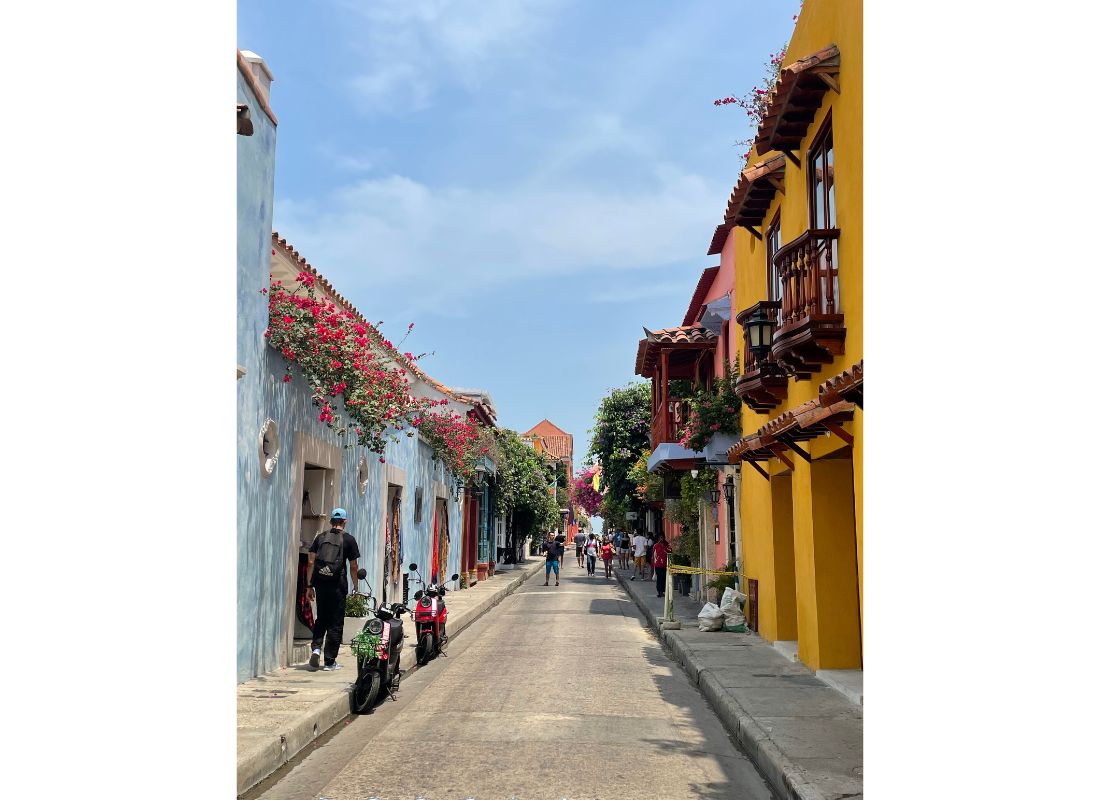
- Bogota: The capital city of Colombia, located in the Andes Mountains. Bogota has a rich cultural scene, with museums, art galleries, and theaters.
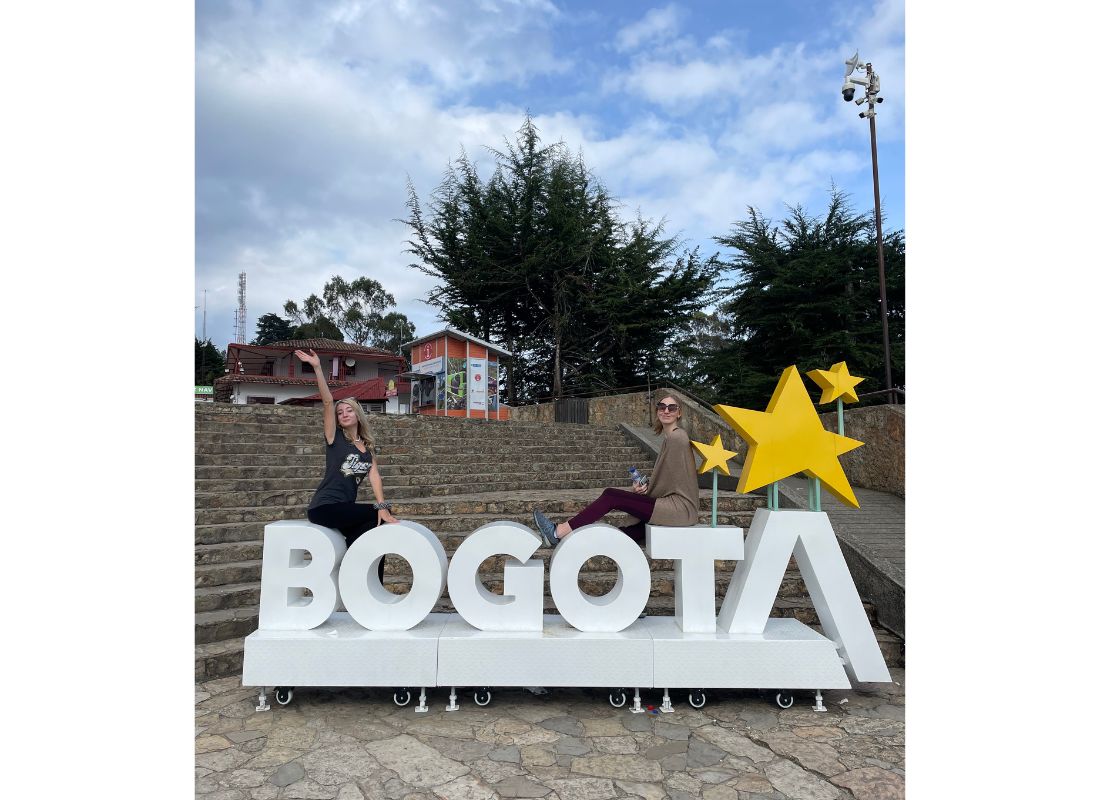
- Medellin: A dynamic city known for its innovative urban design, beautiful parks, and thriving nightlife.
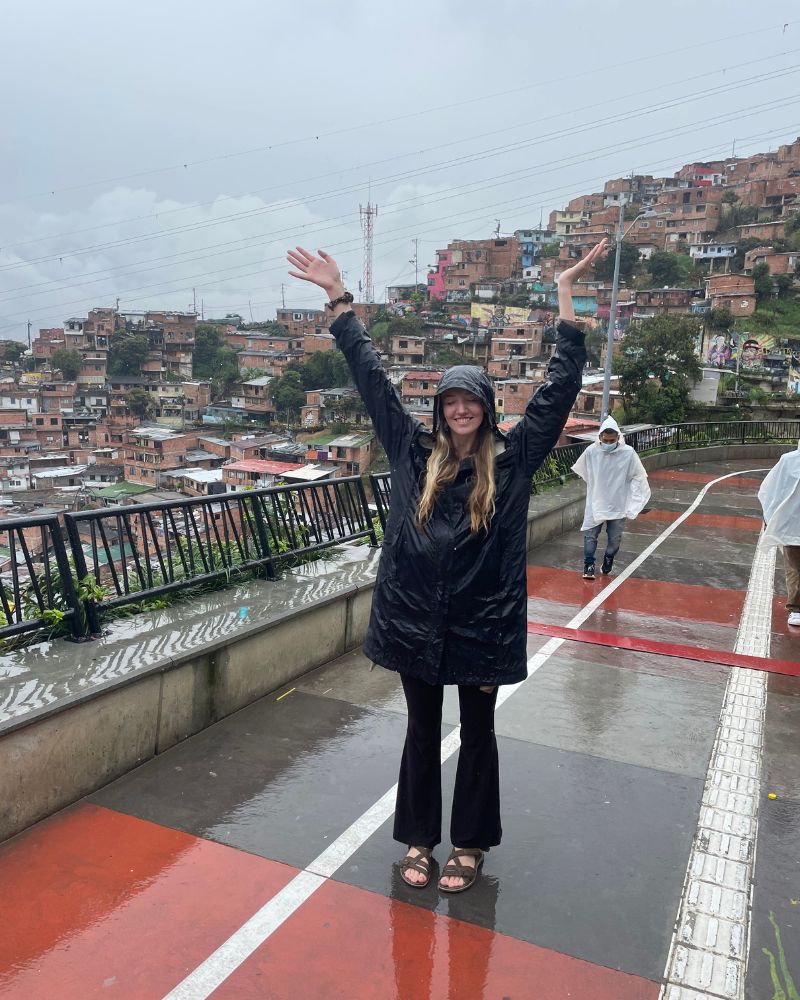
Me exploring Comuna 13 in the rain (which used to be Colombia’s most dangerous neighborhood)
- Tayrona National Park: A protected area on the Caribbean coast, known for its pristine beaches, crystal-clear waters, and lush jungle.
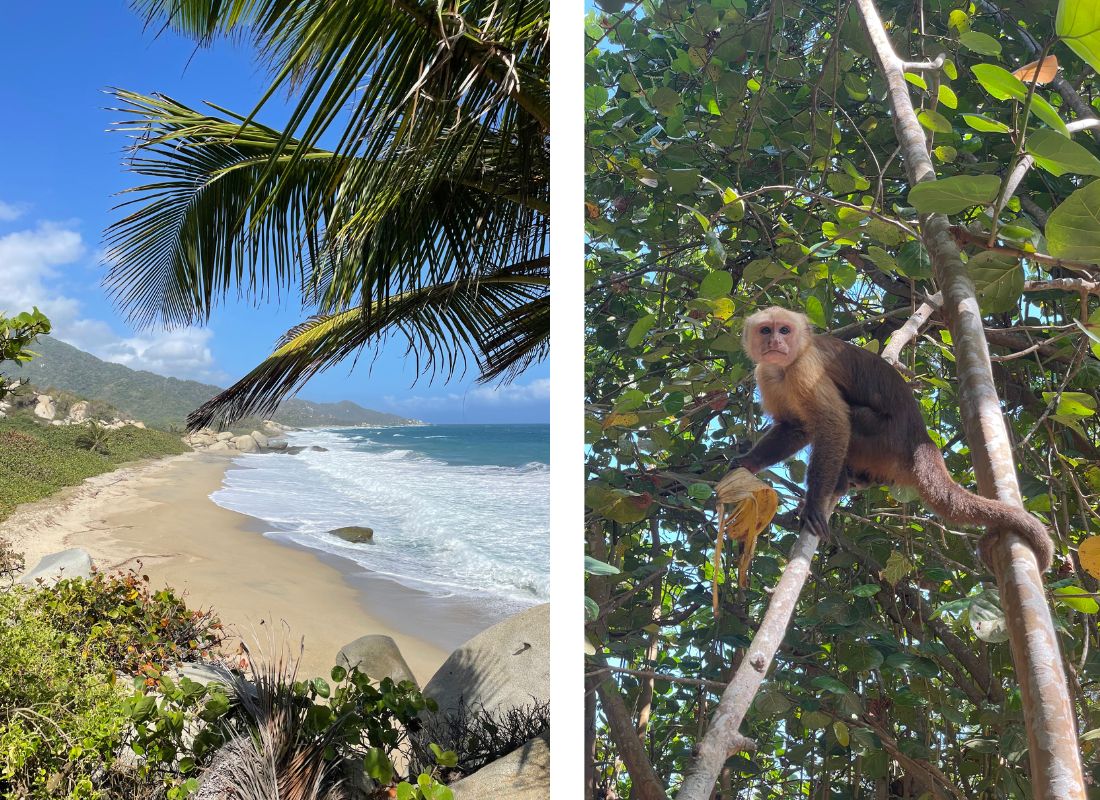
- Coffee Region: A picturesque area in the Andes Mountains, known for its coffee plantations, stunning scenery, and traditional villages.
One Week Colombia Itinerary
One week may not be enough time to explore all that Colombia has to offer, but with careful planning, you can still experience some of the country’s highlights. Here’s a suggested itinerary for one week in Colombia:
Day 1: Arrive in Bogotá
Spend your first day exploring Colombia’s capital city. Take a walking tour of the historic Candelaria neighborhood, visit the Gold Museum and Botero Museum, and enjoy a traditional Colombian meal at one of the city’s many restaurants.
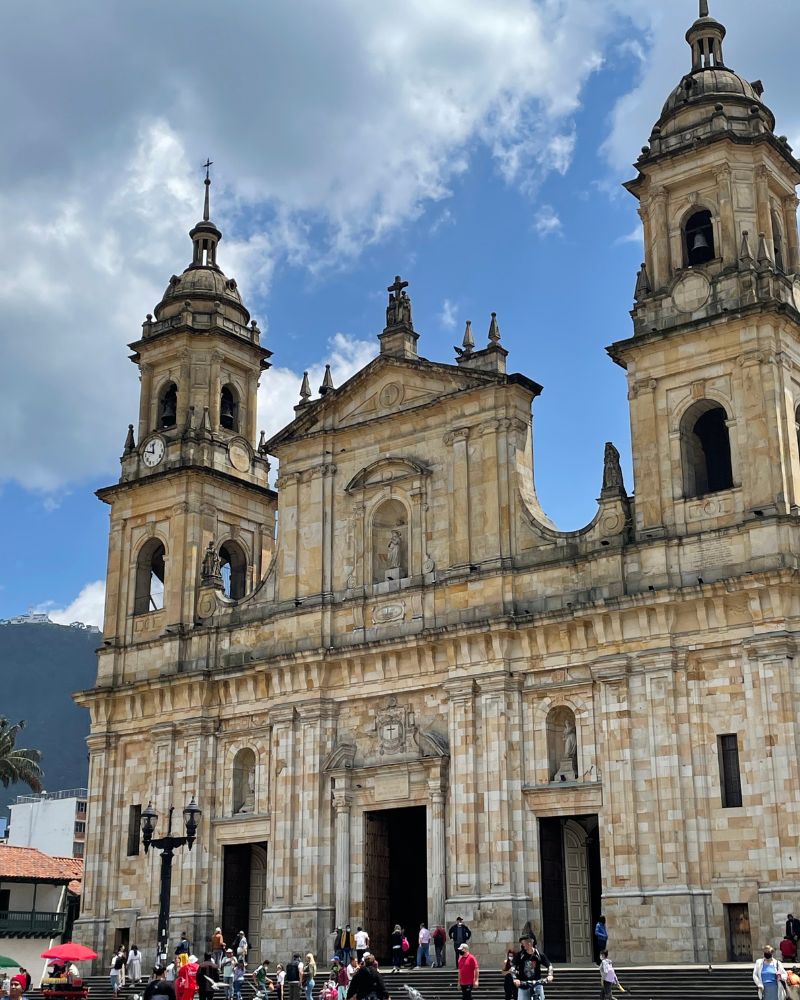
Day 2: Fly to Cartagena
Fly to the Caribbean coast and spend the day exploring the beautiful colonial city of Cartagena. Wander through the narrow streets of the Old Town, visit the Castillo San Felipe de Barajas, and enjoy the city’s lively nightlife.
Day 3: Tayrona National Park
Take a day trip to Tayrona National Park, which is known for its beautiful beaches and lush jungle. Hike through the park to see wildlife, swim in the crystal-clear waters, and relax on the white sand beaches.
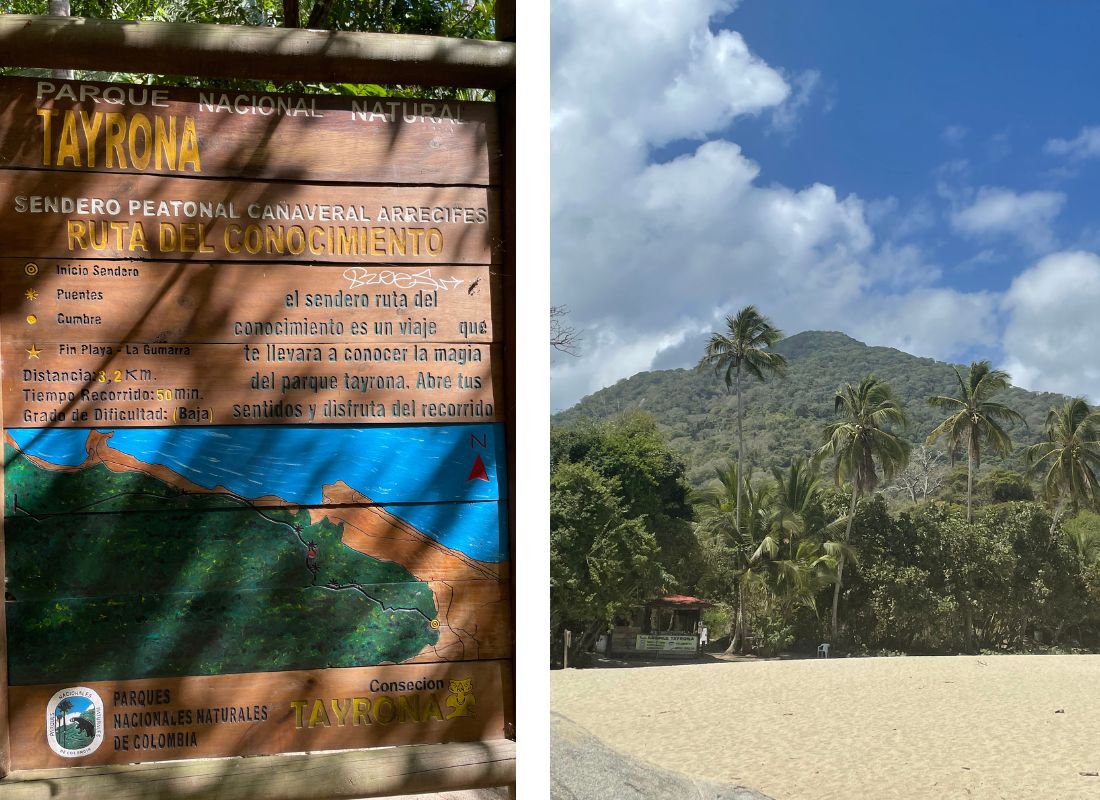
Day 4: Fly to Medellín
Fly to Medellín, Colombia’s second-largest city. Take a cable car up to the hillside neighborhood of Santo Domingo for panoramic views of the city, visit the Plaza Botero and Museum of Antioquia, and enjoy the city’s lively nightlife.
Day 5: Guatapé
Take a day trip to the colorful town of Guatapé, which is known for its colorful houses and the towering rock of El Peñol. Climb the 700 steps to the top of the rock for panoramic views of the surrounding countryside.
Day 6: Coffee Region
Visit the coffee region and stay in the charming town of Salento. Take a coffee tour to learn about the coffee-making process and try some of the world’s best coffee. Hike through the Cocora Valley to see the towering wax palms, which are the national tree of Colombia.
Day 7: Return to Bogotá
Fly back to Bogotá and spend your last day shopping for souvenirs and enjoying the city’s vibrant culture before departing Colombia.
This itinerary will give you a taste of Colombia’s diverse culture, natural beauty, and rich history. While one week is not enough to see everything, you can still experience some of the country’s highlights and make memories that will last a lifetime.
Two Week Colombia Travel Itinerary
With two weeks in Colombia, you’ll have more time to explore the country’s diverse landscapes, cultural sites, and vibrant cities. Here’s a suggested itinerary for two weeks in Colombia:
Day 1-3: Bogotá
Spend your first few days exploring Colombia’s capital city. Take a walking tour of the historic Candelaria neighborhood, visit the Gold Museum and Botero Museum, and enjoy a traditional Colombian meal at one of the city’s many restaurants. On day 3, take a day trip to the nearby Zipaquirá Salt Cathedral.
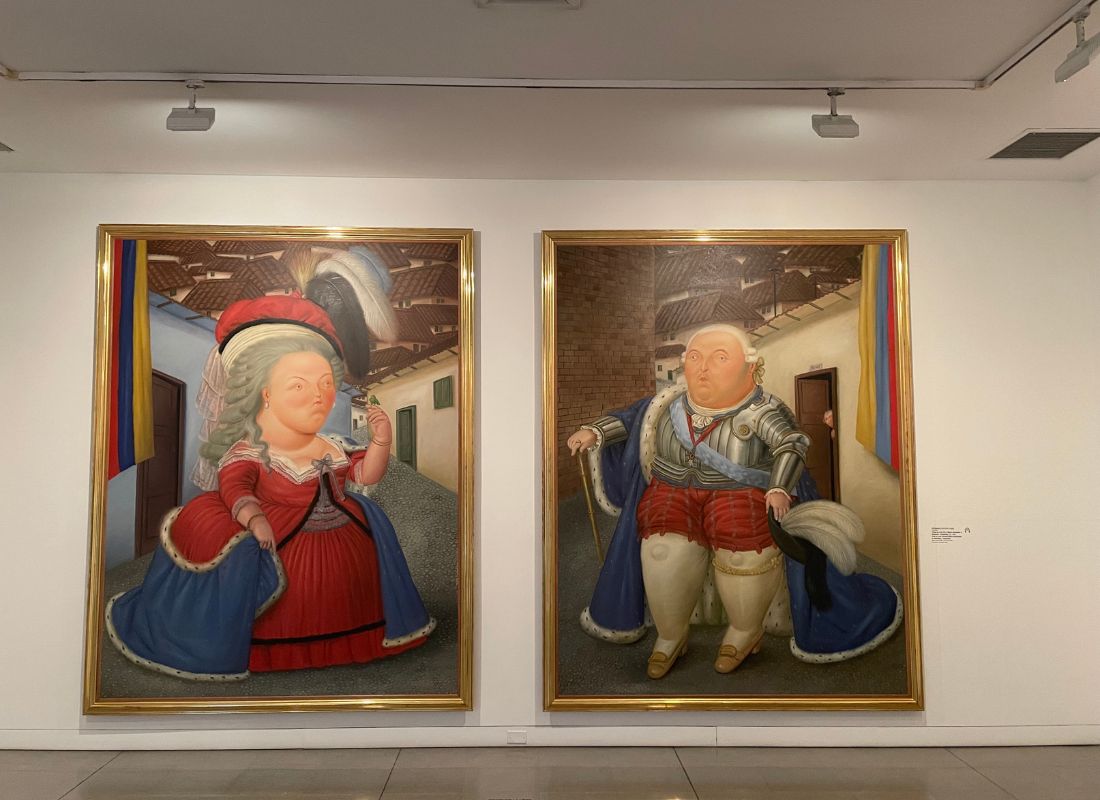
Artwork by the famous Colombian artist Botero.
Day 4-6: Medellín
Fly to Medellín, Colombia’s second-largest city. Take a cable car up to the hillside neighborhood of Santo Domingo for panoramic views of the city, visit the Plaza Botero and Museum of Antioquia, and enjoy the city’s lively nightlife. On day 6, take a day trip to the colorful town of Guatapé and climb the 700 steps to the top of El Peñol for panoramic views of the surrounding countryside.
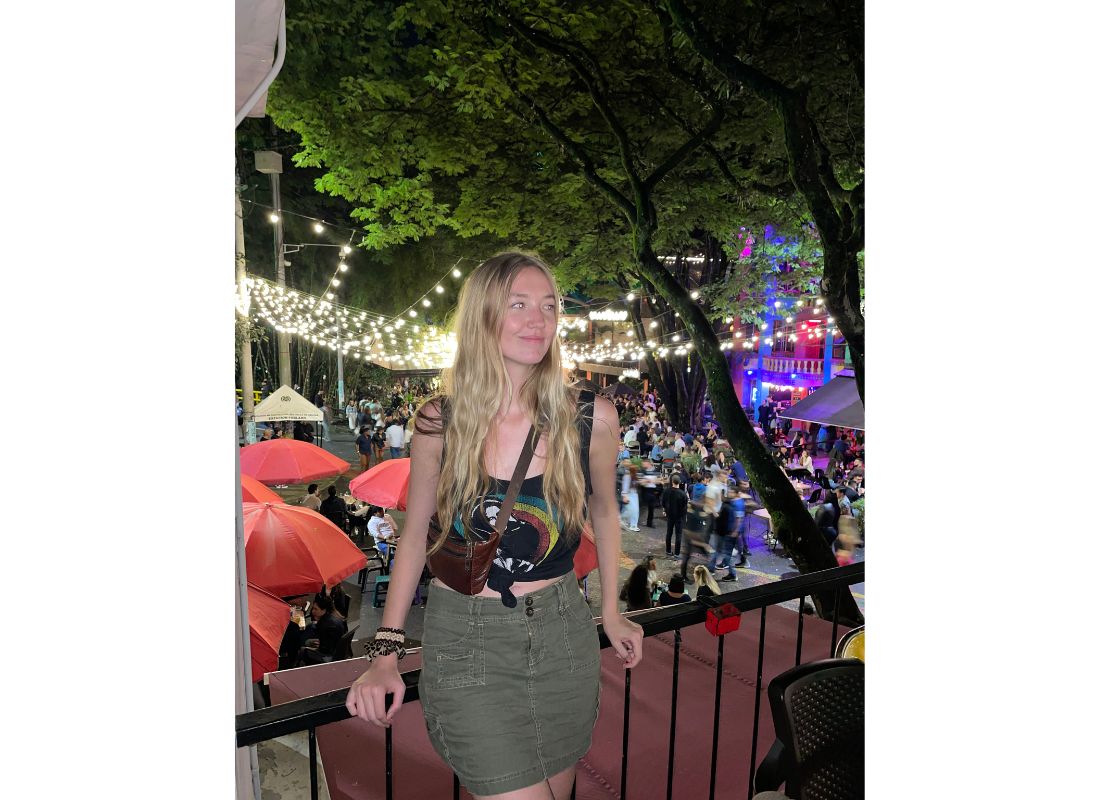
A night out in Medellin
Day 7-9: Coffee Region
Visit the coffee region and stay in the charming town of Salento. Take a coffee tour to learn about the coffee-making process and try some of the world’s best coffee. Hike through the Cocora Valley to see the towering wax palms, which are the national tree of Colombia. On day 9, visit the town of Manizales and take a scenic drive to the Termales del Ruiz hot springs.
Day 10-12: Cartagena
Fly to the Caribbean coast and spend the next few days exploring the beautiful colonial city of Cartagena. Wander through the narrow streets of the Old Town, visit the Castillo San Felipe de Barajas, and enjoy the city’s lively nightlife. On day 12, take a day trip to the Rosario Islands for some beach time and snorkeling.
Day 13-14: Tayrona National Park
Take a day trip to Tayrona National Park, which is known for its beautiful beaches and lush jungle. Hike through the park to see wildlife, swim in the crystal-clear waters, and relax on the white sand beaches.
Day 15-16: San Andrés
Fly to the Caribbean island of San Andrés and spend your last few days relaxing on the beach, snorkeling in the crystal-clear waters, and exploring the island’s culture and history.
This itinerary will give you a comprehensive view of Colombia’s diverse culture, natural beauty, and rich history. With two weeks, you’ll have enough time to see some of the country’s highlights while still allowing for some downtime to relax and soak up the tropical vibes.
One Month Colombia Itinerary
Welcome to Colombia, a country filled with diversity, culture, and adventure. If you have one month to explore this amazing country, you’re in for a treat. From the vibrant cities to the lush green jungles and sandy beaches, there’s something for everyone here. Let’s take a look at how to make the most of your one month in Colombia.
Week 1: Bogotá and the Coffee Region
Start your journey in the capital city of Bogotá. Take a walking tour of the historic Candelaria neighborhood, where you can admire the colorful colonial architecture and learn about the city’s rich history. Visit the Gold Museum, which houses an impressive collection of pre-Columbian gold artifacts, and the Botero Museum, which features the works of the famous Colombian artist Fernando Botero.
Next, head to the coffee region, which is known for its lush green hills and coffee plantations. Stay in the charming town of Salento, where you can hike through the Cocora Valley and see the towering wax palms, which are the national tree of Colombia. Take a coffee tour to learn about the coffee-making process and try some of the world’s best coffee.
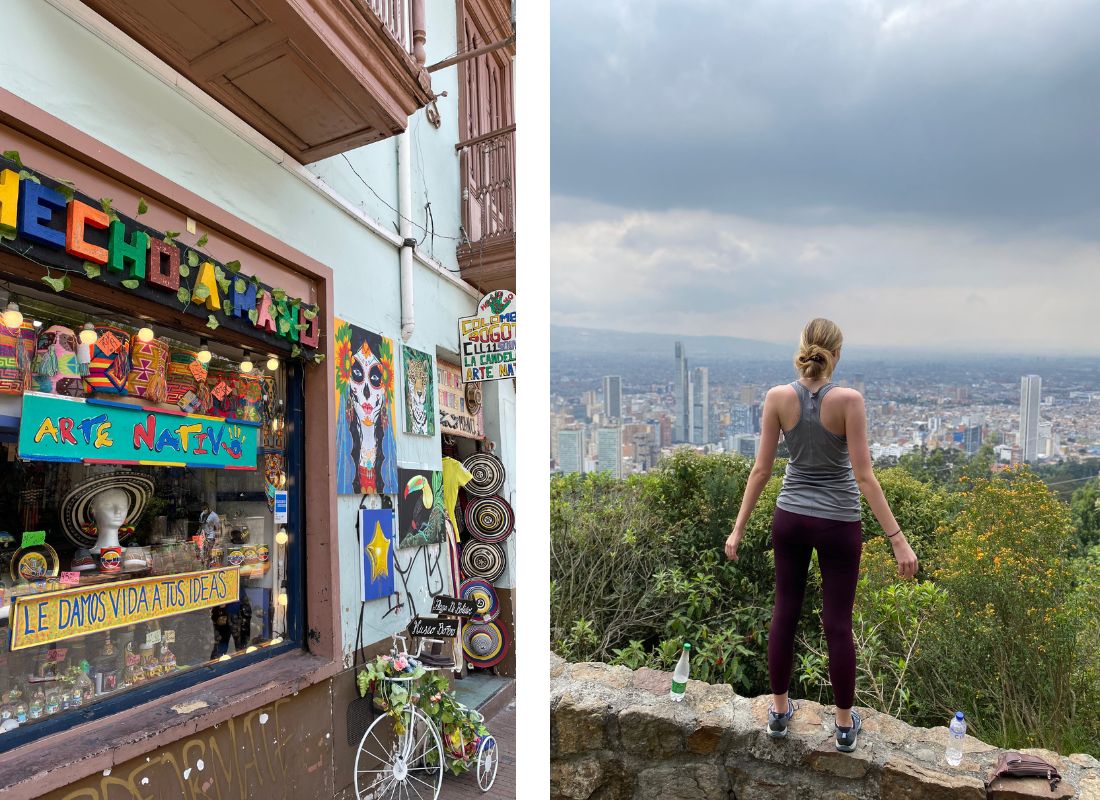
Bogota, Colombia
Week 2: Medellín and Guatapé
After the coffee region, head to the vibrant city of Medellín, which was once one of the most dangerous cities in the world but has since undergone a transformation and is now known for its innovative public transportation system, beautiful parks, and lively nightlife. Take a cable car up to the hillside neighborhood of Santo Domingo, which offers breathtaking views of the city. Visit the Plaza Botero, which features sculptures by Fernando Botero, and the Museum of Antioquia, which houses a collection of art and artifacts from the region.
From Medellín, take a day trip to the colorful town of Guatapé, which is known for its colorful houses and the towering rock of El Peñol. Climb the 700 steps to the top of the rock for panoramic views of the surrounding countryside.
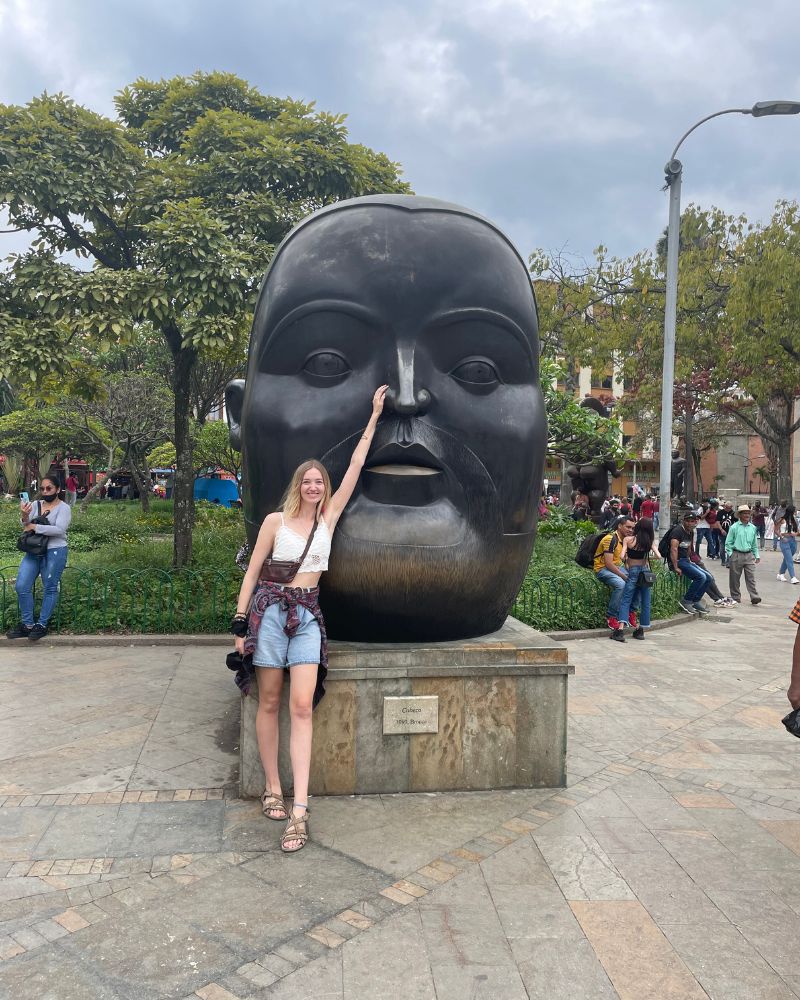
Botero Square in Medellin, literally so much fun
Week 3: Cartagena and Tayrona National Park
Next, head to the Caribbean coast and visit the beautiful colonial city of Cartagena. Wander through the narrow streets of the Old Town, which is a UNESCO World Heritage site, and admire the colorful buildings and balconies filled with flowers. Visit the Castillo San Felipe de Barajas, a fortress built by the Spanish in the 17th century to protect the city from pirates.
After Cartagena, head to Tayrona National Park, which is home to some of Colombia’s most beautiful beaches. Stay in a rustic eco-lodge and spend your days hiking through the jungle, swimming in the crystal-clear waters, and relaxing on the white sand beaches.
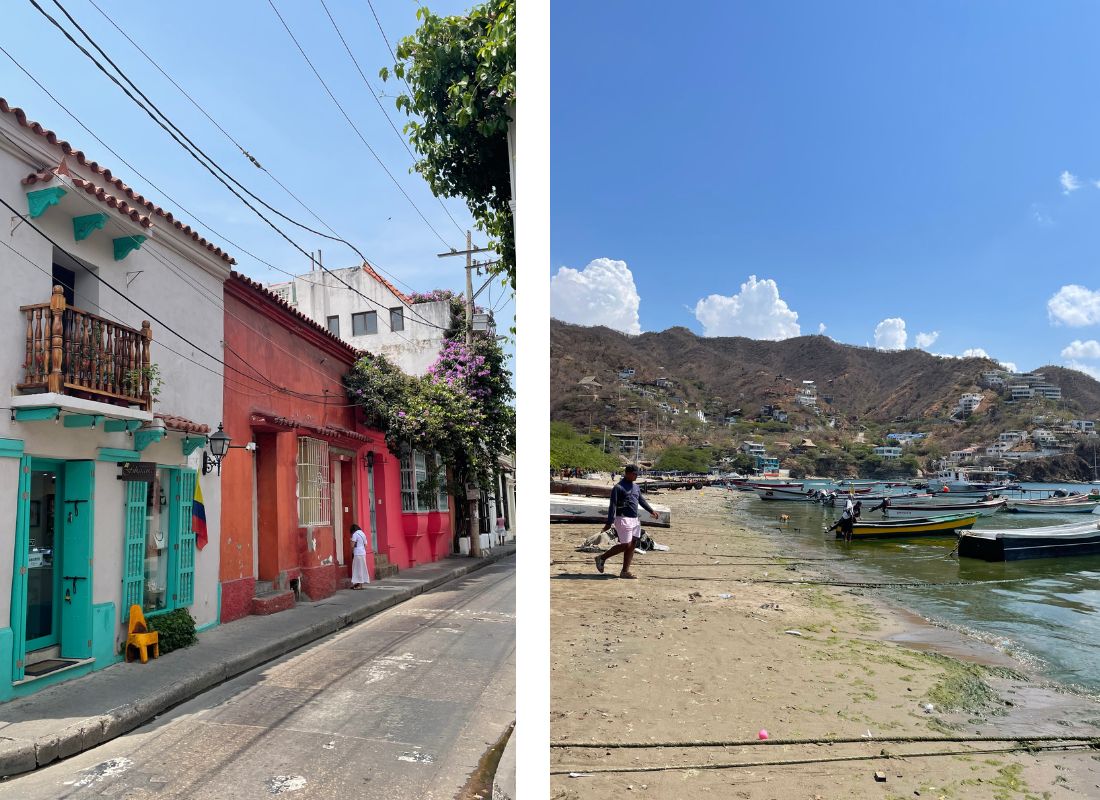
Santa Marta, Colombia
Week 4: The Caribbean Islands
Finish your trip with a visit to one of Colombia’s stunning Caribbean islands. Visit the laid-back island of Providencia, which is known for its turquoise waters, colorful coral reefs, and friendly locals. Snorkel or dive to see the colorful marine life, or simply relax on the beach and soak up the sun.
Alternatively, head to the island of San Andrés, which is known for its lively nightlife and duty-free shopping. Take a boat tour to nearby islands, or go parasailing or jet skiing.
Two Month Colombia Travel Itinerary
With two months in Colombia, you’ll have plenty of time to explore the country’s diverse landscapes, cultural sites, and vibrant cities. Here’s a suggested itinerary for two months in Colombia:
Month 1:
Week 1: Bogotá
Spend your first week exploring Colombia’s capital city. Take a walking tour of the historic Candelaria neighborhood, visit the Gold Museum and Botero Museum, and enjoy a traditional Colombian meal at one of the city’s many restaurants. On day 4, take a day trip to the nearby Zipaquirá Salt Cathedral.
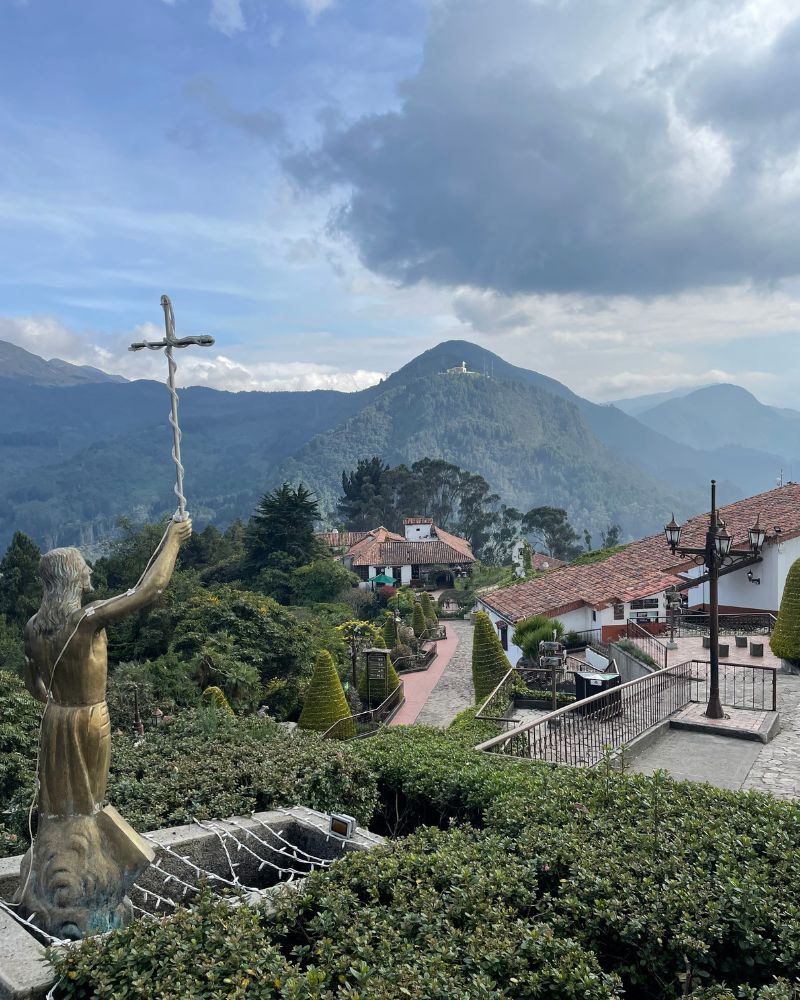
Week 2-3: Medellín and Surroundings
Fly to Medellín, Colombia’s second-largest city. Take a cable car up to the hillside neighborhood of Santo Domingo for panoramic views of the city, visit the Plaza Botero and Museum of Antioquia, and enjoy the city’s lively nightlife. On day 15, take a day trip to the colorful town of Guatapé and climb the 700 steps to the top of El Peñol for panoramic views of the surrounding countryside. Spend the rest of the week exploring the surrounding areas such as Santa Fe de Antioquia, Jerico and Jardin.
Week 4-5: Coffee Region
Visit the coffee region and stay in the charming town of Salento. Take a coffee tour to learn about the coffee-making process and try some of the world’s best coffee. Hike through the Cocora Valley to see the towering wax palms, which are the national tree of Colombia. Spend the rest of the week visiting other towns such as Filandia and Armenia, and enjoy some birdwatching in the region.
Week 6: Cali and Valle del Cauca
Travel to Cali, the salsa capital of Colombia, and spend a few days learning how to dance salsa, visiting museums, and enjoying the nightlife. Spend the rest of the week exploring the nearby Valle del Cauca region and visiting towns such as Buga and San Cipriano.
Week 7-8: Pacific Coast
Travel to Colombia’s Pacific coast and spend a week exploring the beautiful beaches and lush jungle of this region. Visit the Chocó and Nuquí areas for whale watching, snorkeling, and enjoying the beauty of the untouched nature.
Month 2:
Week 9-10: Cartagena and Caribbean Coast
Fly to the Caribbean coast and spend the next two weeks exploring the beautiful colonial city of Cartagena and its surroundings. Wander through the narrow streets of the Old Town, visit the Castillo San Felipe de Barajas, and enjoy the city’s lively nightlife. On day 10, take a day trip to the Rosario Islands for some beach time and snorkeling. Spend the rest of the week exploring other towns such as Santa Marta and Taganga.
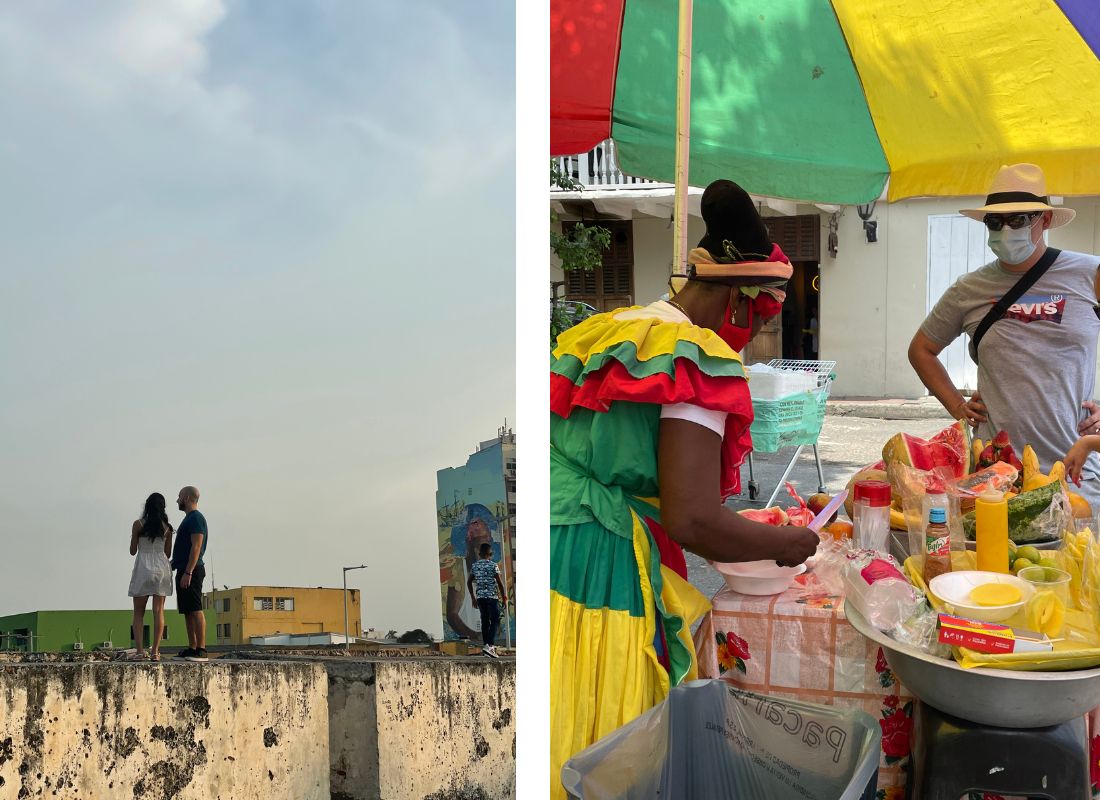
Cartagena, Colombia
Week 11-12: Tayrona National Park and Sierra Nevada
Take a few days to hike through the beautiful Tayrona National Park, which is known for its beautiful beaches and lush jungle. Hike through the park to see wildlife, swim in the crystal-clear waters, and relax on the white sand beaches. Spend the rest of the week exploring the Sierra Nevada region, visiting indigenous communities, and learning about the local culture.
Week 13-14: San Andrés and Providencia
Fly to the Caribbean islands of San Andrés and Providencia and spend your last few days relaxing on the beach, snorkeling in the crystal-clear waters, and exploring the islands’ culture and history.
What is the Best Time to Travel to Colombia?
The best time to travel to Colombia depends on your specific travel preferences and the regions you plan to visit. Generally, the best time to visit Colombia is during the dry season, which runs from December to March and from July to August. During these months, you can expect sunny weather, fewer crowds, and less rain.
However, Colombia’s climate can vary greatly depending on the region. For example, the coastal regions are typically hot and humid year-round, while the Andean regions have a more temperate climate. The Amazon and Pacific regions tend to have high rainfall and humidity throughout the year.
If you plan to visit the Caribbean coast or Pacific coast, the best time to visit is between December and March when the weather is sunny and dry. However, keep in mind that this is also peak tourist season, so prices may be higher and popular destinations may be more crowded.
If you plan to visit the Andean region, including cities like Bogotá and Medellín, the best time to visit is during the dry season from December to March or during July and August. The weather is usually mild with occasional rain showers.
If you plan to visit the Amazon region, the best time to visit is during the dry season from December to March, as it tends to rain heavily throughout the rest of the year.
Overall, Colombia is a great destination to visit year-round due to its diverse climates and activities, but if you want to avoid the crowds and enjoy sunny weather, the best time to visit is during the dry season from December to March and from July to August.
Colombia Travel Guide: What to Pack
When packing for Colombia, it’s important to consider the climate, activities, and cultural norms of the region you will be visiting. Here are some general items to consider packing:
- Light, breathable clothing – Colombia has a tropical climate, so lightweight and breathable clothing is a must. Avoid synthetic materials that can trap heat and moisture.
- Comfortable shoes – Depending on your itinerary, you may do a lot of walking or hiking, so comfortable shoes are important. Sneakers or hiking shoes are a good choice, and sandals or flip-flops can be useful for the beach.
- Sun protection – Bring a hat, sunglasses, and sunscreen with a high SPF to protect your skin from the intense sun. This is my favorite travel-size sunscreen that is also good for the face.
- Insect repellent – Colombia has a high risk of mosquito-borne illnesses, so insect repellent is a must, particularly if you plan to visit the Amazon region or other areas with high mosquito activity. Here are some cool travel-friendly insect repellent bracelets.
- Rain gear – Colombia can have heavy rain showers, particularly during the wet season. Having a sturdy raincoat can make all the difference between a good day and a bad day.
- Light jacket or sweater – The Andean regions can have cooler temperatures, especially at night. Bring a light jacket or sweater for cooler evenings.
- Swimsuit – Colombia has beautiful beaches and swimming spots, so don’t forget your swimsuit.
- Daypack or backpack – A comfortable daypack or backpack is useful for carrying your essentials during day trips or hiking.
- Power adapter – Colombia uses Type A and Type B power outlets, so make sure to bring a power adapter if your electronics require it. I’ve always found universal travel adapters to work best for me.
- Respectful clothing – Colombia is a conservative country, and in some areas, revealing clothing may not be appropriate. Consider packing more modest clothing options for cultural sensitivity.
Remember to pack light and only bring what you need. You can buy many items locally in Colombia if you forget something or need additional supplies.
Tips for Staying Safe While Traveling Colombia
Colombia has made significant strides in improving its security situation in recent years, but like any country, there are still risks and precautions to take. Here are some tips for staying safe when traveling in Colombia:
- Research the areas you plan to visit – Before you go, research the regions and cities you plan to visit. Some areas may have higher crime rates or security risks, so it’s important to be aware of these and plan accordingly. This way you will know which areas to avoid and which areas are perfectly safe.
- Don’t walk around at night – Most crimes occur at night, especially when it is just two or three people together (especially if you are alone!). If you are going out at night, get a ride instead of walking and putting yourself at risk.
- Use reputable transportation – Use reputable taxi companies or ride-sharing apps to get around, especially at night. Avoid hailing taxis on the street. I always preferred using Uber over taxis, even if it is illegal- they still run!
- Keep valuables secure – Keep your valuables like cash, credit cards, and passports secure and out of sight, preferably in a safe or hidden money belt. Avoid carrying large amounts of cash or wearing expensive jewelry. I always wear a fanny pack and tuck it under my clothes if possible. On transit, I hold onto it with one hand just to be extra secure.
- Stay alert in crowds – Crowded areas like markets or public transportation can be a target for pickpockets, so stay alert and keep your belongings close to you.
- Be aware of scams – Scams can happen anywhere, so be aware of common travel scams and don’t fall for offers that seem too good to be true.
- Stay in reputable accommodations – Book accommodations from reputable sources and read reviews from other travelers before booking. Avoid staying in remote or unsecured areas. I preferred staying in more tourist/ expat-friendly areas just because it felt more safe.
- Learn some Spanish – Learning some basic Spanish can be helpful for communication and getting around. Even just a few words can go a long way.
- Be respectful of local customs and culture – Be respectful of local customs and culture, dress modestly in conservative areas, and avoid discussing sensitive political or social issues. In Medellin my walking tour guide refused to say the name ‘Pablo Escobar’ out loud because of all the mixed opinions on him, so be aware.
- Keep a low profile – Avoid drawing attention to yourself, and don’t flaunt your wealth or expensive belongings. Keep your phone tucked away or they may make you a target! When I first landed in Bogota, I did not realize this until multiple local women came up to me and warned me. Bless their souls.
- Trust your instincts – If you feel uncomfortable or unsafe in a situation, trust your instincts and remove yourself from the situation. It’s never worth the risk, trust me.
Is it Safe to Travel to Colombia Alone?
I explored Colombia as a solo female traveler for over one month, including the major cities and smaller villages. I never had an issue while traveling, but I also took precautions. Check out my article on how to stay safe solo traveling in Colombia for all my best advice!
How to Travel Around Colombia
There are several options for traveling around Colombia, depending on your preferences and budget. You can check out the 12Go website to see the cheapest ways to get from one destination to the next. Here are some of the most common ways to get around:
- Flights – Colombia has several domestic airlines that offer flights between major cities. This is a good option if you want to cover long distances quickly or if you’re short on time. I took flights from Bogota to Medellin and Medellin to Santa Marta because they were cheap and saved a lot of time. However, I took buses on all other occasions.
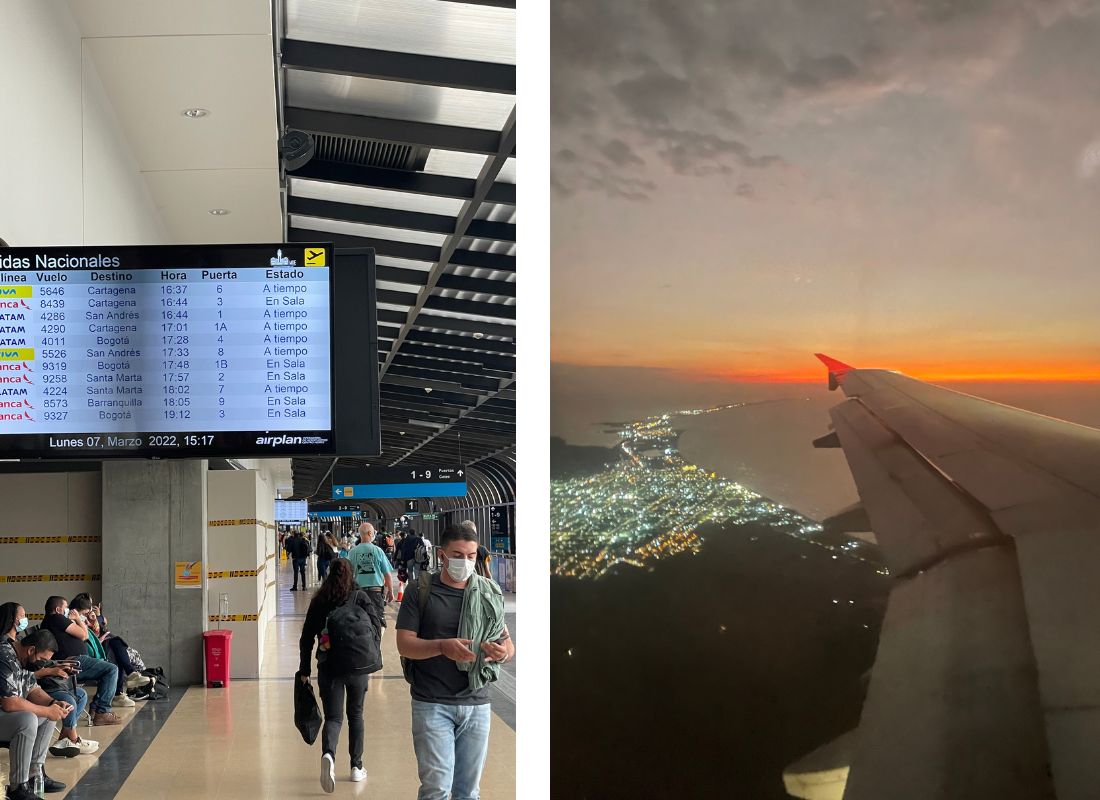
- Buses – Buses are the most common form of transportation in Colombia, and they go everywhere. There are several types of buses, ranging from basic local buses to more comfortable and air-conditioned long-distance coaches. Some companies also offer overnight buses with sleeper seats. To book a bus check out this website.
- Taxis – Taxis are widely available in most cities and are a convenient way to get around. Make sure to use reputable taxi companies or ride-sharing apps to ensure your safety.
- Uber – I used Uber in Colombia’s bigger cities of Medellin and Bogota to get around. It feels much safer than taxis and gives you an upfront price. However, Uber is illegal in the country so the driver may ask you to sit up front- don’t be scared, it’s normal so that it looks like they are just driving with a friend.
- Car rental – Renting a car is a good option if you want more flexibility and independence in your travels. However, driving in Colombia can be challenging, especially in the cities, and roads in some areas may not be well-maintained.
- Motorcycle rental – Renting a motorcycle is a popular option for those looking for a more adventurous way to travel. However, it’s important to be experienced and comfortable riding a motorcycle before attempting this. Stay safe please!
- Boat – If you’re traveling along the Caribbean coast, you may be able to take a boat or ferry to some destinations. I traveled by boat from Tayrona National Park back to the small village nearby. Honestly, it was terrifying but thrilling being out in the open ocean in such a small boat!
- Walking – Walking is a great way to explore cities and towns, and many areas have pedestrian-friendly streets and sidewalks. I basically walked everywhere, except in Medellin which has a really nice metro system.
PIN THIS PAGE!
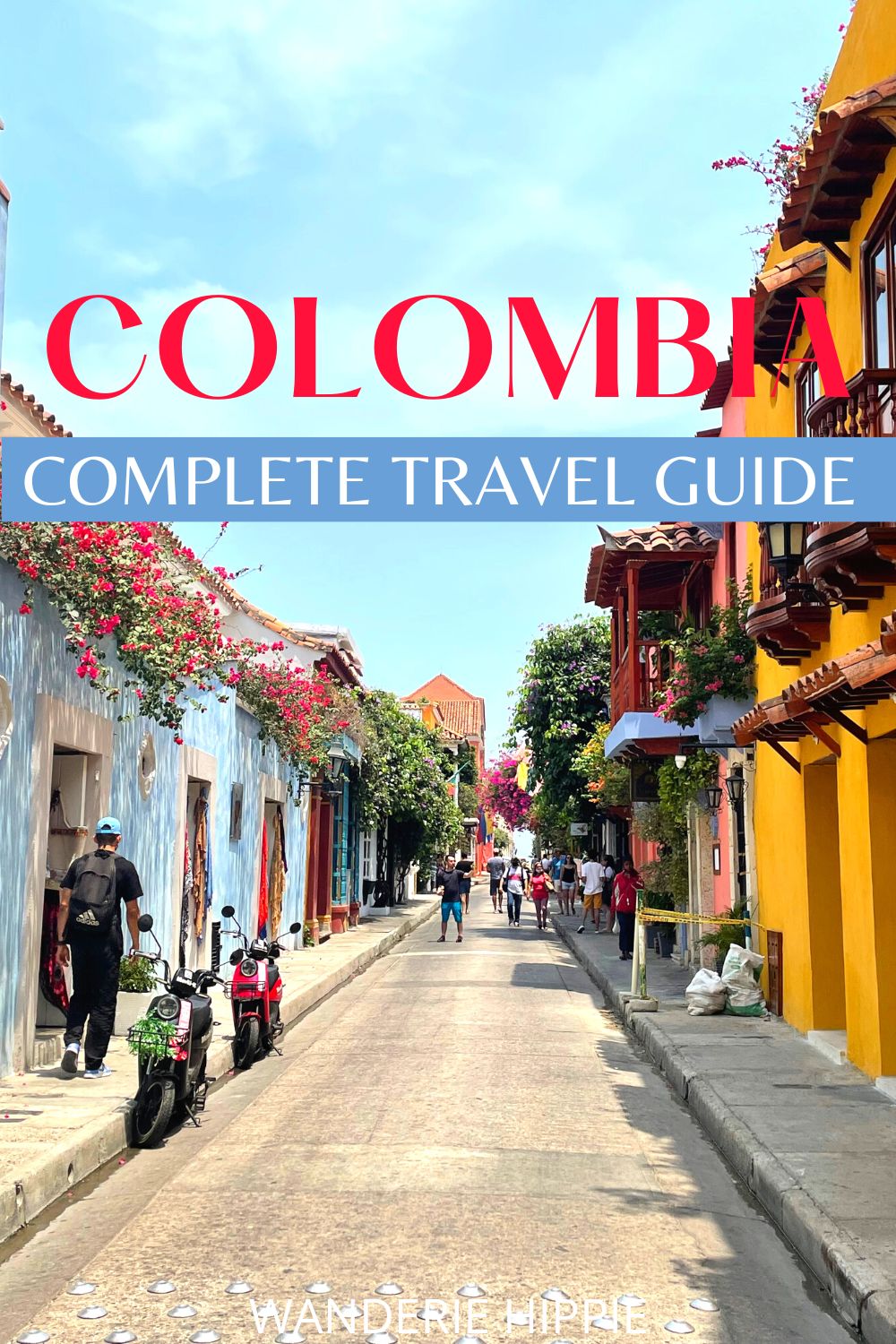



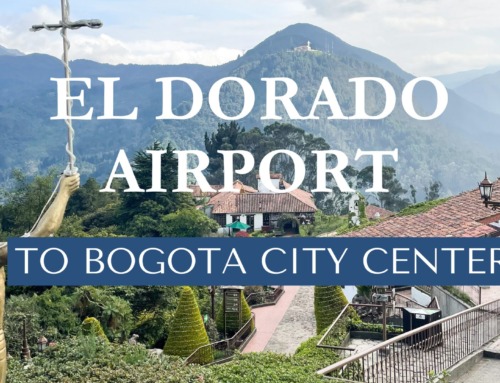
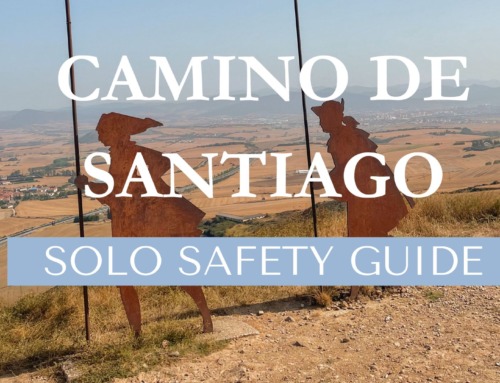
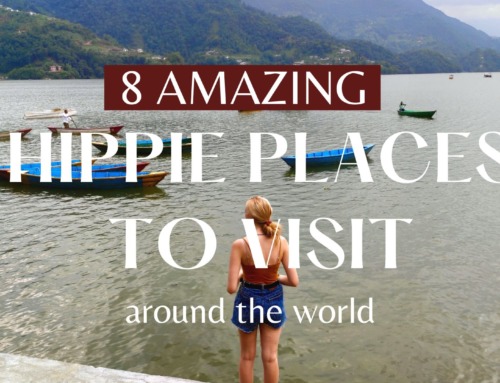
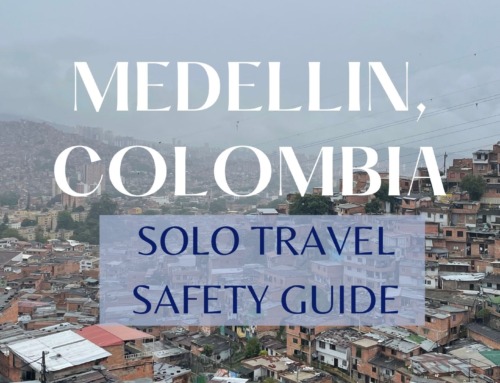
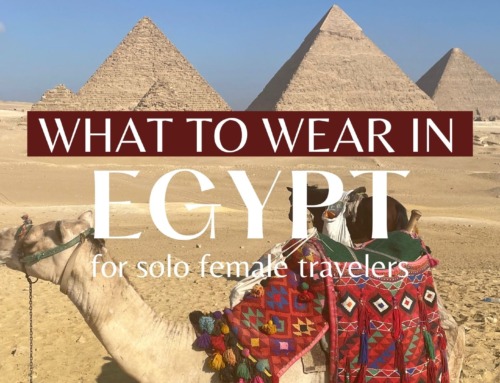
Leave A Comment